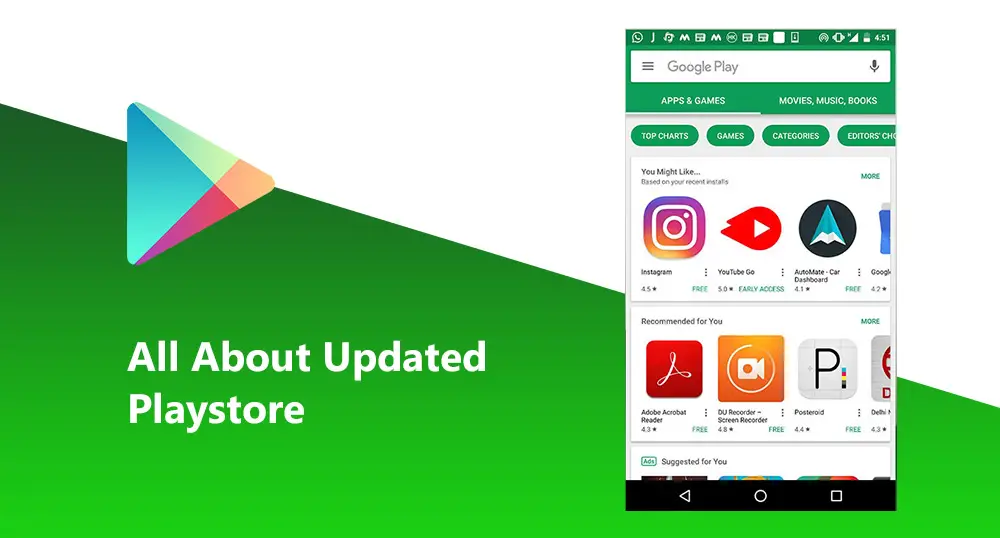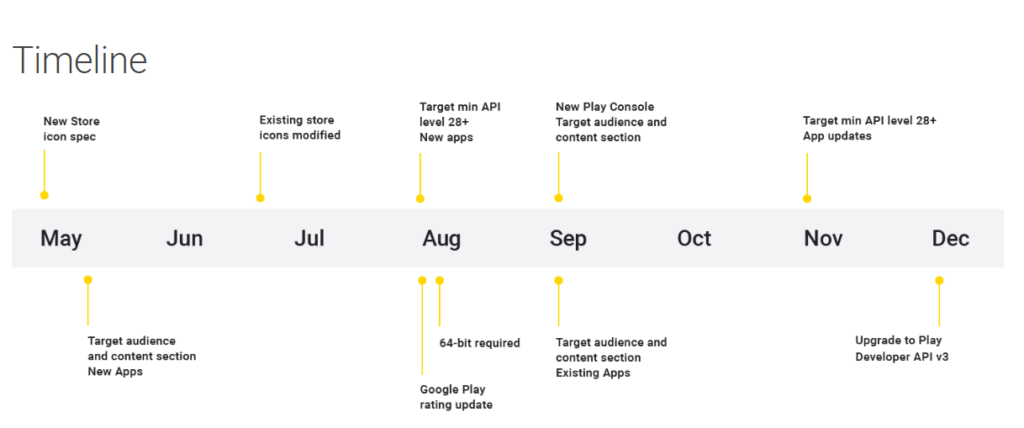In today’s fiercely competitive app market, ensuring high quality is paramount for success. With countless apps vying for attention on the Play Store, standing out requires more than just functionality. Our comprehensive guide, Guide to Improve app quality on play Store, offers invaluable insights and strategies to elevate your app’s performance and user experience. Whether you’re a seasoned developer or a newcomer to the app industry, our guide provides actionable tips and best practices to enhance every aspect of your app, from design and functionality to user engagement and retention. By following our expert advice, you’ll not only improve your app’s visibility and ranking on the Play Store but also attract and retain more satisfied users. Let our guide be your roadmap to app excellence on the Play Store.
Here in this blog, we have shared three key factors to focus on guide to improve app quality on play store and also the tools available in the Google Play Console. Tools will help you to understand user behavior, monitor technical performance, and deliver the best in-app experience for users. Google Play Store focuses on the app quality that will impact where and how prominently you are eligible to surface in the store, which creates the most compelling and delightful experience possible.
Three Key Factors to focus to improve the app quality
-
Excellent in-app user experience:
A unique in-app experience means having intuitive navigation, controls, and proper menu access. Even to have an overall polished design, enough content to keep users engaged for the long term. To maintain all this, Google has come up with point factors to consider:
- Content Engagement: Create loyalty and sustainable app engagement by delighting your users’ needs.
- Track your Beta Versions: Beta version release can provide you to get good feedback that helps to make improvements before the original release.
- Placement of AD: For the apps that integrate ADs will ensure a pleasant experience by opting the right format and placement throughout your app.
-
Powerful store listing page:
To have an excellent quality app, you must have an active, accurate, and exact page listing. Your app must also define clearly and accurately communicate the value and intended use cases of the users. Here are some of the factors that determine your app quality on-page listing:
-
Ratings and Reviews:
Always try to monitor your user ratings and reviews. It is a good idea if the developer responds to the negative ratings. Statistics say that receiving replies from developers will increase their rating by +0.7 stars on average. In August 2019, the Google Play Store will focus on Ratings and reviews as they place more weight on your app.
-
Best Practice:
It would be the best practice to maintain excellent and creative assets that include app title, icon, screenshots, and videos. Even if it is a good idea to have an accurate app description representing your app, to improve your app discovery opportunities, it’s better to have a video to let users know in the clear about your app, and for a game app, it’s better to provide 16:9 ratio screenshots.
-
Localization:
Utilize the localization concept to reach the international market, try to translate your app store listing to optimize for each country.
-
Custom store listing:
Before launching the app release tailor of your app in the market by sending messages to a specific user group based on their country, messages can be like install the app, or even you can ask the users for pre-registration. So that you can promote or highlight your app key features and so you can get feedback about the features. By that, the developers can update the features as accordingly.
-
Store listing experiments:
A/B test on all your components independently for at least one week to gather exact results.
-
-
Robust app stability and technical performance:
One must check the overall technical performance of your app if it is power thrifty, responsive, efficient and well-behaved, then 42% of the users leave a 1-star review mentioning to have stability and to fix bugs.
-
Android Vitals:
Check the Android Vital Dashboard which shows the app performance on core vitals metrics like ANR rate, crash rate, excessive wakeups, and stuck partial wake-locks in the background. View at developers selected peer benchmarks to see how you measure to others in your category. Showing the bad things in Android vitals will undoubtedly negatively impact the user experience in your app and could restrict your exposure opportunities on Google Play.
-
Pre-launch reports:
Pre-launch helps the developers to identify the problems in your app and can rectify them to ensure that your app is representing the highest possible quality app to the users upon launch. The pre-launch reports utilize automated tests on real devices to identify layout issues, provide crash diagnostics, locate security vulnerabilities, and many more.
-
Get the most out of the Google Play Console to improve the app quality. Let’s go through some of the launch checklists that Google play store provides.
Launch Checklist provided by Google Play Store
The checklist usually followed by the developers to bring together that the process followed for your app launched successfully. Here are the checklists that a developer must follow to launch an app as follow:
-
Know the developer program Policies:
The policies make sure that the Play Store is a trusted resource for Android users. Before launching the app, go through the policies thoroughly as there are consequences for violations.
-
Create your developer account:
Sign up your developer account and check every detail of the developers are accurate. If you are a product seller, then sign up with a merchant account.
-
Plan for localization:
If you had thought of marketing your app in the international market, then start planning early and get set with localized copies to follow the localization checklist.
-
Release the app simultaneously:
Planning to release your app on multiple platforms and devices, then increase your promotion activities and also the install count. All these should be included in your development plans before. If you are launching in only one platform, ask for users’ contact details and let them know that your app is ready in the Play Store.
-
Test as per the quality guidelines:
To have the best quality for your app, you must follow the quality guidelines that offer the basic UI design, features, and functions as expected by Android users.
-
Target recent API level:
Google Play from August 2018 updated that the app that is going to develop must support at least API level 26(Android 8.0/Oreo).
-
Build your Android app bundle:
When you are ready to launch your app either for testing or as a final product, then you should build your Android App Bundle in Android Studio. App bundle so created will be used by Google Play’s Dynamic delivery to generate sign and serve optimized APKs for each users’ device, which results in a smaller app to download and install.
-
Run internal tests:
Utilize internal test tracks for thorough app testing and feedback. Prioritize closed test tracks for multiple versions before open or production.
-
Prepare your app’s Play Store listing:
Store listing like descriptions, promotional graphics, screenshots, and videos are to be prepared in advance to be added to your app’s Play Store page. Also, make sure to include a link to your privacy policy if needed. List your localization policies in all languages your app supports, and for the countries, you are targeting.
-
Provide pre-registration process:
Create interest in your app or game by providing pre-registration process and set up custom pre-registration listing page.
-
Upload your bundle to test tracks:
Before launch, upload app bundles to test tracks for issue identification. Fixing issues improves initial release quality.
-
Determine your app compatibility to devices:
Make the Play store know which Android versions and devices that your app is compatible with.
-
Analyze the pre-launch reports:
Once your app is uploaded to the Android app bundle to closed or open track, you will receive a pre-launch report. This report is used to identify the issues.
-
Fix App price and countries:
Set your app as free or paid, once you defined your monetization model. Also, select the countries in which your app is to get targeted.
-
Choose into the right distribution choices:
Choose in the right devices and programs such as Wear OS by Google, Android TV, and developed for families. Once this was done, Google will review your app and approves as accordingly so that Google Play will make your app discoverable for users.
-
Fix your subscriptions and In-app products:
Once you select the countries that you want to sell your app. Set up a merchant account and add details, prices for your in-app products and subscriptions.
-
Respond to your user review:
Know exactly what your user is thinking of your app and respond to their reviews to work on any issue that you not identified while testing.
-
Define the rate of your apps’ content:
Getting a rate for your app by an appropriately aged audience as per the Developer Program Policies.
-
App Promotion:
Use Google Play Badge for promoting your app and also use other marketing tools to grow your targeted audience.
-
Finalize the app before publishing:
Before going for launch cross-check that everything was done as per the list. It means that you are ready to release the app to the production channel. In case if you are releasing an update, then use staged rollouts to release your updates to actively more users. If you find any issue in the updated version, then you can limit users it affects.
-
Verify your vitals:
Android vitals helps you understand, fix stability and performance issues. Improving your vitals will give the results in better user experience, more user engagement, and high ratings.
-
Final App launch:
By following all the checklist mentioned, if you have done everything as per the checklist mentioned above, you are ready for the app launch.
Upcoming updates about Android and Google Play
Google makes regular changes to its platform and policies to improve the user experience and assure a safe ecosystem. Here in the below image, we have given monthly updates that Google is coming up from August to December 2019.
Conclusion
Google always work hard to improve their app quality and performance with a clear checklist to follow by every developer who launches the app to the Play Store.
Krify is the top leading Android app development company in India and the UK have expert domain knowledge and also have skilled Android developers who can work under pressure situations to develop the unique app as per the client requirement and also launch the app to the app store by following the Google checklist. For more details contact us.




